
Do you have a question about the Samsung Galaxy S20 Ultra 5G and is the answer not in the manual?
| Screen shape | Curved edge screen |
|---|---|
| Pixel density | 511 ppi |
| Display diagonal | 6.9 \ |
| Touch technology | Multi-touch |
| Touchscreen type | Capacitive |
| Display resolution | 3200 x 1440 pixels |
| Native aspect ratio | 20:9 |
| Maximum refresh rate | 120 Hz |
| Gorilla Glass version | Gorilla Glass 6 |
| Rounded display corners | Yes |
| Display number of colors | 16 million colors |
| High Dynamic Range (HDR) technology | High Dynamic Range 10+ (HDR10 Plus) |
| Processor cores | 8 |
| Processor family | Samsung Exynos |
| Processor frequency | 2.73 GHz |
| Processor lithography | 7 nm |
| RAM type | LPDDR5 |
| User memory | 104 GB |
| RAM capacity | 12 GB |
| Compatible memory cards | MicroSD (TransFlash) |
| Maximum memory card size | 1000 GB |
| Internal storage capacity | 128 GB |
| Flash type | LED |
| Optical zoom | 10 x |
| Rear camera type | Quad camera |
| Front camera type | Single camera |
| Maximum frame rate | 960 fps |
| Video recording modes | 720p, 1080p, 2160p |
| Rear camera pixel size | 0.8 µm |
| Rear camera resolution | 12000 x 9000 pixels |
| Front camera pixel size | 0.7 µm |
| Rear camera sensor size | 1/1.33 \ |
| Rear camera aperture number | 1.8 |
| Resolution at capture speed | 1280x720@30fps, 1280x720@960fps, 1920x1080@240fps, 1920x1080@30fps, 1920x1080@60fps, 3840x2160@30fps, 3840x2160@60fps |
| Second rear camera pixel size | 1.4 µm |
| Video capture resolution (max) | 7680 x 4320 pixels |
| Rear camera resolution (numeric) | 108 MP |
| Front camera resolution (numeric) | 40 MP |
| Third rear camera aperture number | 3.5 |
| Fourth rear camera aperture number | 1 |
| Second rear camera aperture number | 2.2 |
| Rear camera field of view (FOV) angle | 79 ° |
| Front camera field of view (FOV) angle | 80 ° |
| Third rear camera resolution (numeric) | 48 MP |
| Second rear camera resolution (numeric) | 12 MP |
| Third rear camera field of view (FOV) angle | 24 ° |
| Second rear camera field of view (FOV) angle | 120 ° |
| 4G standard | LTE |
| 2G standards | EDGE, GPRS, GSM |
| 3G standards | HSDPA, HSPA+, HSUPA, UMTS |
| SIM card type | NanoSIM + eSIM |
| Wi-Fi standards | 802.11a, 802.11b, 802.11g, Wi-Fi 4 (802.11n), Wi-Fi 5 (802.11ac), Wi-Fi 6 (802.11ax) |
| Bluetooth version | 5.0 |
| 3G bands supported | 850, 900, 1900, 2100 MHz |
| 4G bands supported | 700, 800, 850, 900, 1800, 1900, 2100, 2300, 2500, 2600 MHz |
| SIM card capability | Dual SIM |
| Mobile network generation | 5G |
| Subscription type | No subscription |
| USB version | 3.2 Gen 1 (3.1 Gen 1) |
| USB connector type | USB Type-C |
| Multimedia Messaging Service (MMS) | Multimedia Messaging Service (MMS) is a standard way to send messages that include multimedia content to and from a mobile phone over a cellular network |
| Color name | Cosmic Black |
| Form factor | Bar |
| Product color | Black |
| Protection features | Dust resistant, Water resistant |
| International Protection (IP) code | IP68 |
| Themes | Wallpapers |
| Personalization | Icons, Menu, Shortcuts |
| Personal info management (PIM) | Alarm clock, Calculator, Calendar, Notes |
| FM radio | - |
| Speakers | stereo |
| Audio system | Dolby Atmos |
| Supported video modes | 720p, 1080p, 2160p, 4320p |
| Audio formats supported | 3GA, AAC, AMR, APE, AWB, DFF, DSF, FLAC, IMY, M4A, MID, MIDI, MP3, MXMF, OGA, OGG, OTA, RTTTL, RTX, WAV, WMA, XMF |
| Image formats supported | BMP, GIF, HEIF, JPEG, PNG, WBMP, WEBP |
| Video formats supported | 3G2, 3GP, ASF, AVI, FLV, M4V, MKV, MP4, WEBM, WMV |
| Platform | Android |
| Virtual assistant | Samsung Bixby |
| Google applications | Google Maps, Google Play |
| App distribution platform | Google Play |
| Operating system installed | Android 10.0 |
| Talk time (3G) | - h |
| Battery capacity | 5000 mAh |
| Browsing time (4G) | 17 h |
| Browsing time (Wi-Fi) | 18 h |
| Body SAR (EU) | 1.557 W/kg |
| Head SAR (EU) | 0.66 W/kg |
| Depth | 8.8 mm |
|---|---|
| Width | 76 mm |
| Height | 166.9 mm |
| Weight | 220 g |
Guidelines to preserve the device's water and dust resistance capabilities.
Explains when the device may heat up and provides steps to resolve the issue.
Information about the device's battery, charging, and power management.
Steps for powering the device on, off, and performing a forced restart.
Instructions for the first-time setup process after powering on the device.
Guide on using Smart Switch to migrate data via USB or wirelessly.
How to view and manage notifications and quick settings.
Guide to downloading, installing, and removing applications from the device.
Introduction to Bixby, its features, and how to start and use it.
Making and receiving calls, using speed dial, and managing contacts.
Creating, importing, syncing, searching, and managing contacts.
Sending, viewing, sorting, and blocking messages.
Taking photos and recording videos using various modes and settings.
Registering and using cards for quick and secure mobile payments.
Managing wellness and fitness, setting goals, and tracking progress.
Controlling and managing smart appliances and IoT products.
Using the smartphone like a computer with an external display.
Configure wireless and network settings like Wi-Fi, Bluetooth, and mobile data.
Activate Wi-Fi to connect to networks and access the internet.
Exchange data and media files with other Bluetooth-enabled devices.
Use NFC for reading product info, making payments, and buying tickets.
Adjust device sound modes, ringtones, notification sounds, and vibration.
Manage alerts, sounds, and app icon badges for incoming notifications.
Adjust screen settings, including brightness, motion, color modes, and home screen layout.
Configure lock screen settings, including screen lock types and Smart Lock.
Manage security features like face recognition, fingerprints, Secure Folder, and Wi-Fi.
Set up facial recognition for unlocking your device and authenticating apps.
Manage Secure Folder, Secure Wi-Fi, Google Play Protect, and Find My Mobile.
Precautions and tips for effective face recognition.
Register and manage fingerprints for device unlock and secure access.
Create a secure, separate storage area for private content and apps.
Configure privacy settings like permission manager and diagnostic data.
Sync, back up, and restore data using Samsung Cloud or Smart Switch.
Sync device data with Samsung Cloud and back up or restore it.
Activate and configure advanced device features and shortcuts.
Monitor device usage, set timers, and manage children's digital activity.
Overview of device status (battery, storage, memory, security) and optimization.
Check battery status, manage power modes, and optimize battery usage.
Check used and available memory status and manage storage.
Check the device's security status and scan for malware.
Manage device applications, settings, notifications, and permissions.
Customize system settings like language, date, time, and reset options.
Update device software via FOTA, schedule updates, and view update history.
Improve usability with features for vision, hearing, and dexterity.
Activate or deactivate voice feedback for screen reading and control.
Apply themes, fonts, keyboards, and color adjustments for better visibility.
Improve sound quality for hearing aids, amplify ambient sound, and adapt sound settings.
Solutions for common device issues like code prompts, errors, and connectivity.

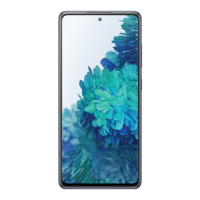

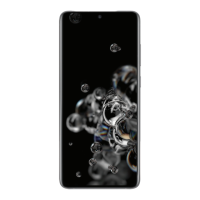
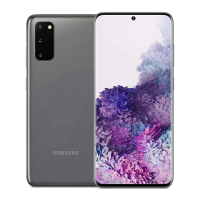
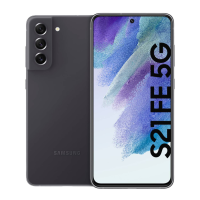


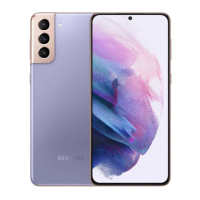
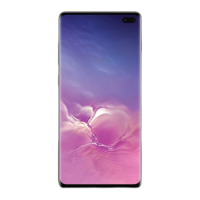


